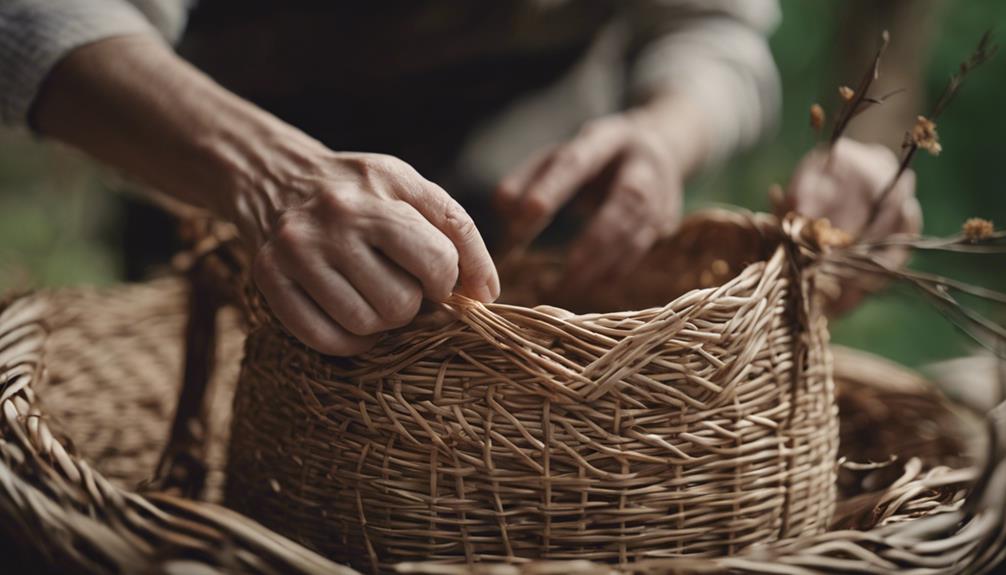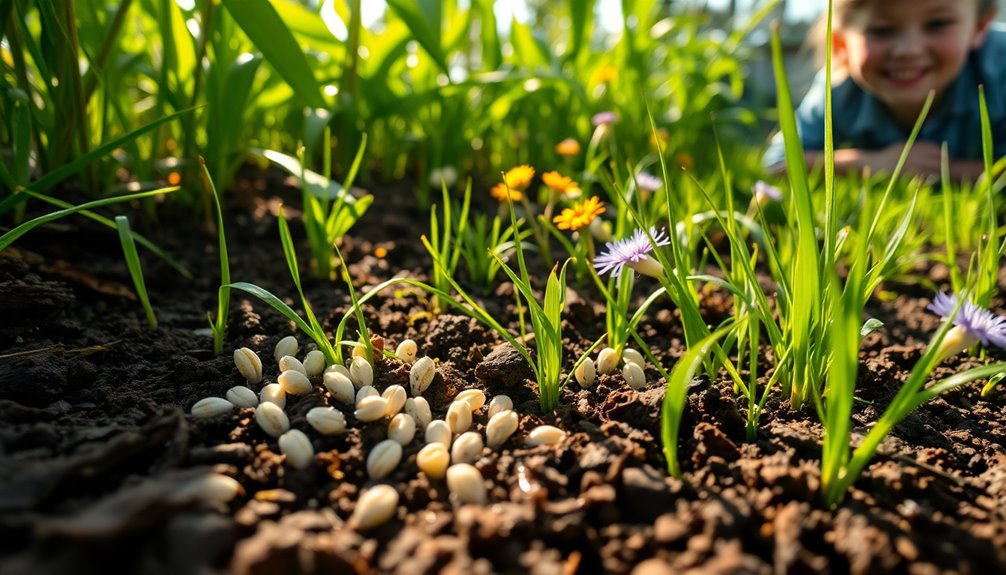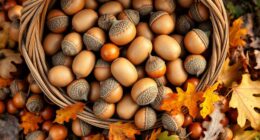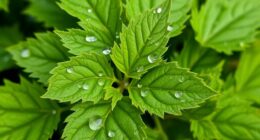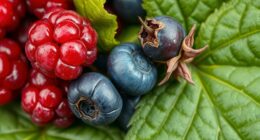To become proficient in foraging, having a good grasp of plant identification is crucial for safety. Misidentifying poisonous plants can result in serious consequences. Beginners should start with familiar plants and gradually broaden their knowledge. Be cautious and avoid consuming unknown plants. Trying small quantities can help gauge reactions. Always carry emergency items such as an EpiPen and Benadryl. Use various resources and apps for plant identification. Practicing minimal waste demonstrates respect for the environment. Sustainable foraging methods help preserve plant populations. Implementing waste reduction strategies supports sustainability efforts. Foraging allows you to connect with nature, reduce stress, and enhance your well-being. Discover additional tips for mastering foraging to have a more fulfilling experience in the wilderness.
Key Takeaways
- Accurate plant identification is critical.
- Start with familiar plants.
- Utilize multiple resources for safety.
- Exercise caution with new plants.
- Embrace sustainable foraging practices.
Importance of Plant Identification
Mastering foraging begins with understanding the critical importance of accurately identifying plants. In the world of foraging, plant identification is a skill that can literally be a matter of life and death. One misstep in recognizing a toxic plant could have severe consequences on your health. To guarantee safety in foraging, it's essential to utilize multiple resources for plant identification. By cross-referencing information from field guides, reputable websites, and local experts, you can bolster your confidence in distinguishing between edible and poisonous plants.
For beginners, starting with familiar plants is advised before branching out to more exotic species. Gradually expanding your knowledge base will help you navigate the vast world of foraging with caution and expertise. Remember, it's always wise to sample a small amount of a new plant to gauge your body's reaction and tolerance levels.
Additionally, carrying emergency items like an EpiPen and Benadryl is a proactive measure to address any potential allergic reactions that may arise while foraging. By prioritizing accurate plant identification, you lay a solid foundation for a safe and rewarding foraging experience.
Safety Precautions in Foraging

Beginners should always exercise caution and refrain from consuming any foraged plant unless they are certain of its safety. Accurate identification of edible plants is crucial to avoid potential risks while foraging. Foraging experts suggest using multiple reliable resources for plant identification to minimize dangers. Trying a small amount of a new plant is advisable to assess allergic reactions or adverse effects on the body. Carrying emergency items like an EpiPen and Benadryl during foraging is recommended for immediate treatment in case of allergies. Utilizing foraging apps and online resources can aid in accurately identifying plants and ensuring safety during expeditions.
| Safety Precautions in Foraging | ||
|---|---|---|
| 1. Exercise Caution | 2. Accurate Identification | 3. Small Trials |
| Beginners must be cautious | Use reliable sources | Try small amounts of new plants |
| 4. Emergency Items | 5. Utilize Technology | |
| Carry EpiPen & Benadryl | Use foraging apps |
Significance of Minimal Waste
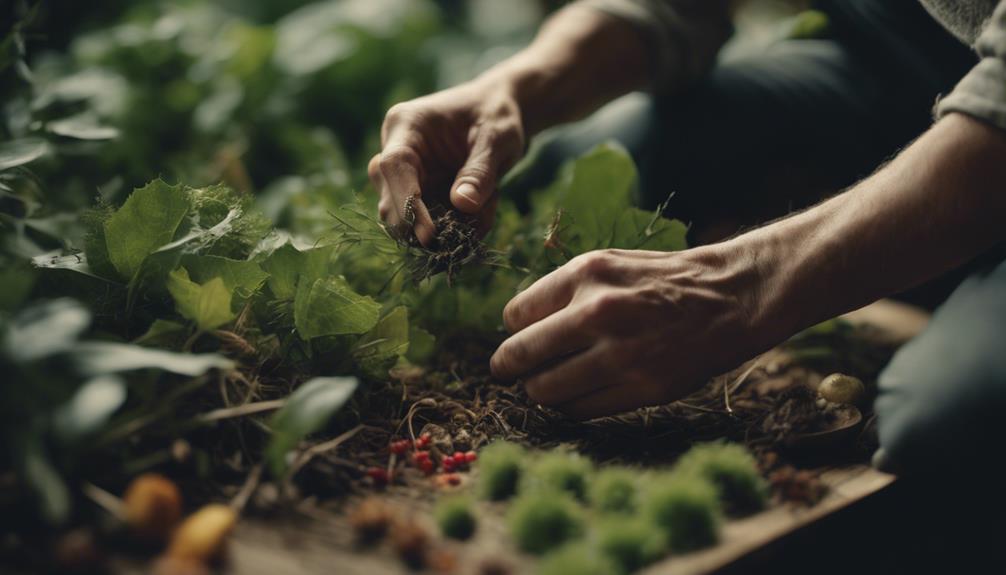
When foraging, it's important to prioritize minimal waste to demonstrate respect for the environment and promote sustainability.
By adopting waste reduction strategies and sustainable foraging practices, you can minimize your environmental impact and contribute to the conservation of wild resources.
Being aware of the significance of minimal waste not only benefits the ecosystem but also fosters a deeper connection with nature and promotes ethical consumption practices.
Waste Reduction Strategies
Utilizing all parts of the plant in foraging is essential for minimizing waste and maximizing sustainability. When foraging for wild plants, waste reduction strategies play an important role in honoring nature and preserving resources. Indigenous foragers, in particular, have honed the art of minimizing waste by creatively utilizing roots, stems, leaves, and flowers for various purposes such as food and medicine. By embracing these waste reduction practices, foragers not only demonstrate respect for the environment but also contribute to a more sustainable lifestyle.
The focus on waste reduction in foraging extends beyond just utilizing plant parts efficiently; it also involves adopting sustainable practices to reduce environmental impact. By incorporating minimal waste principles into foraging routines, individuals can actively participate in preserving the ecosystem and promoting eco-friendliness. Through conscious efforts to minimize waste and maximize resource usage, foragers can play a significant role in maintaining the delicate balance of nature.
Sustainable Foraging Practices
Embracing sustainable foraging practices, particularly focusing on minimal waste, is essential for preserving the environment and promoting eco-friendly harvesting methods. By minimizing waste in your foraging endeavors, you contribute to the sustainability of plant populations and reduce the overall impact on ecosystems.
Here are three key ways in which minimal waste practices benefit both the environment and your foraging experience:
- Utilizing the Whole Plant: When foraging, make an effort to use all parts of the plant, including leaves, stems, roots, and flowers. This not only reduces waste but also allows you to fully appreciate the versatility and nutritional value of different plant components.
- Creative Recipe Development: Experiment with innovative recipes that incorporate various parts of foraged plants. By being creative in the kitchen, you can find new ways to use plant materials that might otherwise go to waste.
- Promoting Sustainable Living: Embracing minimal waste practices in foraging aligns with broader sustainable living principles. By respecting the environment and minimizing waste, you contribute to the conservation of plant species and promote eco-friendly harvesting techniques.
Environmental Impact Awareness
To understand the significance of minimal waste in foraging, it's important to recognize how ethical harvesting practices directly impact the environment and promote sustainability. When foraging for wild edible plants, minimizing waste is essential for preserving natural ecosystems. By utilizing all parts of harvested plants and practicing responsible harvesting techniques, individuals can reduce their environmental impact and contribute to the conservation of biodiversity.
Ethical foraging involves leaving no trace, respecting plant ecosystems, and being mindful of the resources being gathered. This approach not only helps maintain the delicate balance of wild plant populations but also promotes sustainable foraging practices for future generations. Awareness of the environmental impact of waste in foraging encourages a more conscientious and sustainable approach to harvesting wild plants.
Building Awareness of Surroundings

Enhancing your awareness of surroundings through foraging involves attentively identifying plants and considering environmental factors. As you immerse yourself in the natural world, take note of these key elements to enhance your foraging experience:
- Observation:
Pay close attention to the details around you. Notice the shapes, colors, and textures of plants. This practice not only aids in plant identification but also deepens your connection with nature.
- Environmental Factors:
Consider the soil quality, sunlight exposure, and moisture levels in the area. Understanding these factors can help you predict where certain plants are more likely to thrive, guiding your foraging efforts.
- Sensory Experience:
Engage all your senses while foraging. Listen to the rustling of leaves, feel the texture of the plants, and inhale the scents of the forest. This sensory immersion not only enriches your foraging journey but also fosters mindfulness and appreciation for the natural world.
Connecting With Nature

Connecting with nature through foraging offers a multitude of benefits. Immersing yourself in the natural world can have positive effects on your mind and body, promoting overall well-being.
The healing power of the outdoors is a valuable resource that can be harnessed through a deeper connection with nature.
Nature Immersion Benefits
Immersing yourself in nature through foraging cultivates a profound bond with the environment. It goes beyond just collecting food; foraging offers a range of benefits that enhance your well-being and connection to the natural world.
Here are three key benefits of nature immersion through foraging:
- Heightened Awareness and Mindfulness:
When you forage, you become more attuned to your surroundings, noticing the intricate details of the plants and wildlife around you. This increased awareness promotes mindfulness, allowing you to fully engage with the present moment.
- Brain Stimulation and Dopamine Release:
Discovering new plants while foraging triggers a release of dopamine in your brain. This neurotransmitter is associated with pleasure and reward, making foraging a truly satisfying experience that stimulates your brain in a positive way.
- Community Building and Nature Connection:
Foraging can be a shared activity, bringing people together to learn and explore the natural world. This sense of community fosters a deeper connection with nature, enriching the experience for everyone involved.
Mind-Body Connection Importance
Engage with nature through foraging to deepen your mind-body connection and enhance your overall well-being. Foraging immerses you in the natural world, allowing you to connect with the environment on a profound level.
By exploring the wilderness and discovering new plants, you engage your senses and heighten your awareness of the natural beauty around you. This experience fosters mindfulness, bringing a sense of peace and tranquility to your mind.
When you forage and stumble upon new plants, your brain releases dopamine, a neurotransmitter that contributes to feelings of pleasure and reward. This natural high not only stimulates your brain but also instills a sense of wonder and curiosity about the world.
Through foraging, you develop a deeper appreciation for the natural world, cultivating respect for the environment and all its wonders. Sharing this skill with others creates a collective bond that strengthens your connection to nature.
Healing Power of Outdoors
Spending time outdoors foraging can deeply enhance your well-being by connecting you with the healing power of nature. When you engage in foraging activities, you immerse yourself in the natural environment, fostering a sense of peace and tranquility.
Here's how connecting with nature through foraging can benefit you:
- Stress Reduction: Foraging allows you to step away from the hustle and bustle of daily life, reducing stress and anxiety as you focus on the present moment and the beauty of the outdoors.
- Promotes Mental Well-being: Nature therapy, inherent in foraging, has been shown to enhance mental well-being by grounding individuals in the present moment, promoting mindfulness, and lifting overall mood.
- Appreciation for the Environment: Through foraging, you can develop a deeper appreciation for nature and its role in promoting holistic health, fostering a sense of connection and gratitude for the environment.
Sharing the Skill With Others
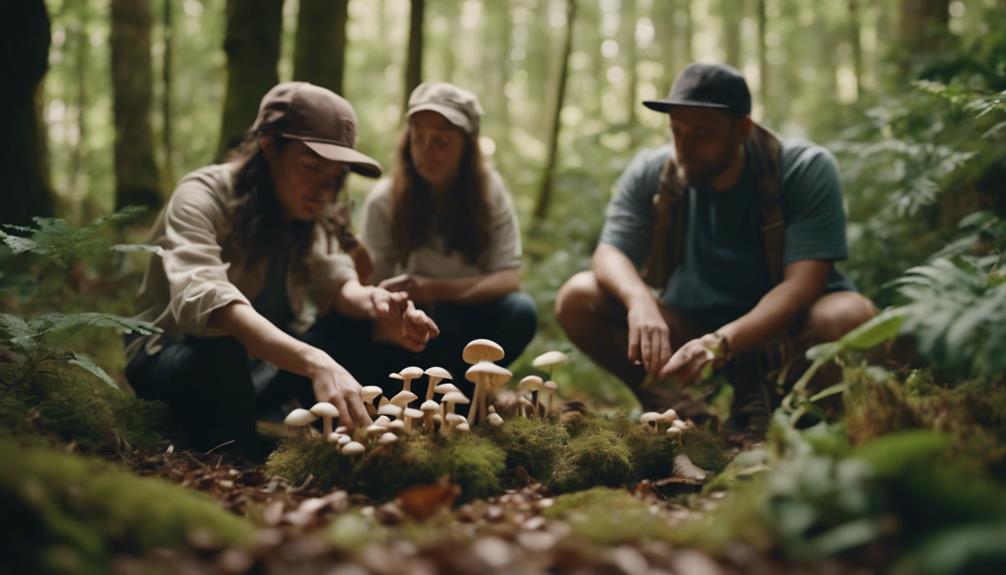
By teaching others the art of foraging, you can pass on valuable knowledge and skills for sustainable living. Workshops in the field of foraging make it easy for participants to learn how to identify safe and edible plants that can be used for culinary and medicinal purposes.
These workshops offer insights into the growth, harvest, and culinary preparation of various wild plants, providing a hands-on experience that enhances learning. Locations like Seed and Spoon and Basil & Rose provide guided foraging experiences, allowing individuals to immerse themselves in the practice under the guidance of experts.
Not only does sharing this skill with others contribute to a deeper understanding of nature and sustainable practices, but it also creates a sense of community among foragers. Additionally, foraging in new locations while traveling adds a unique and enriching element to the exploration experience, making it an exciting way to discover the local flora and fauna.
Following Safety Guidelines
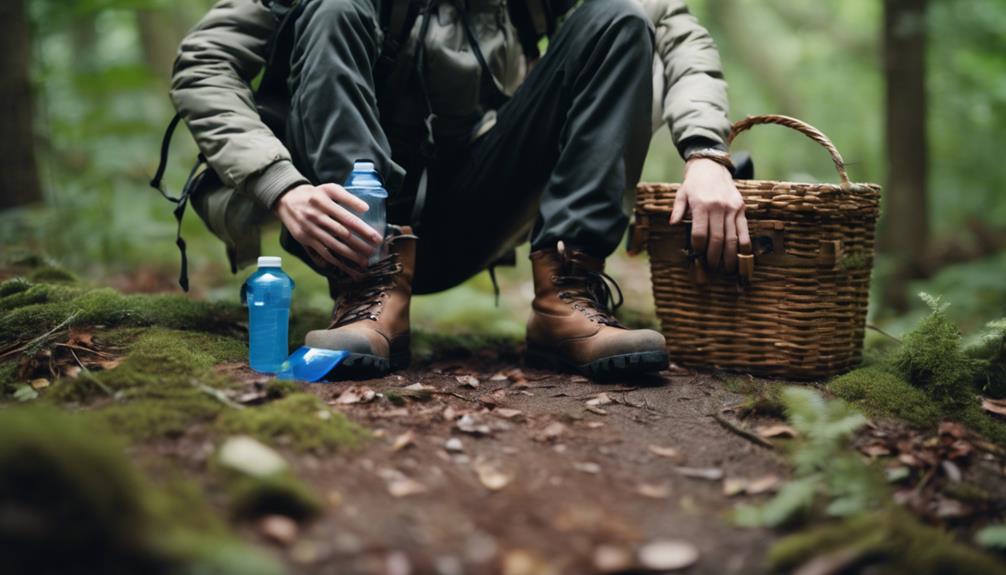
Ensuring safety while foraging involves thorough plant identification to prevent potential risks. Seasoned foragers prioritize safety by following these guidelines:
- Seek Confirmation:
Always double-check the identification of edible species with reliable sources before consumption to avoid any harmful effects. Beginners should exercise caution and refrain from trying any plant they're unsure about.
- Start Small:
It's advisable to sample a small portion of a newly foraged plant to test for any adverse reactions before consuming larger quantities. This precaution can help detect potential allergies or intolerances early on.
- Emergency Preparedness:
Seasoned foragers carry essential items like an EpiPen and Benadryl while foraging to respond promptly to allergic reactions. Being equipped with these emergency supplies can make a significant difference in case of unexpected incidents.
Using Multiple Resources for Identification
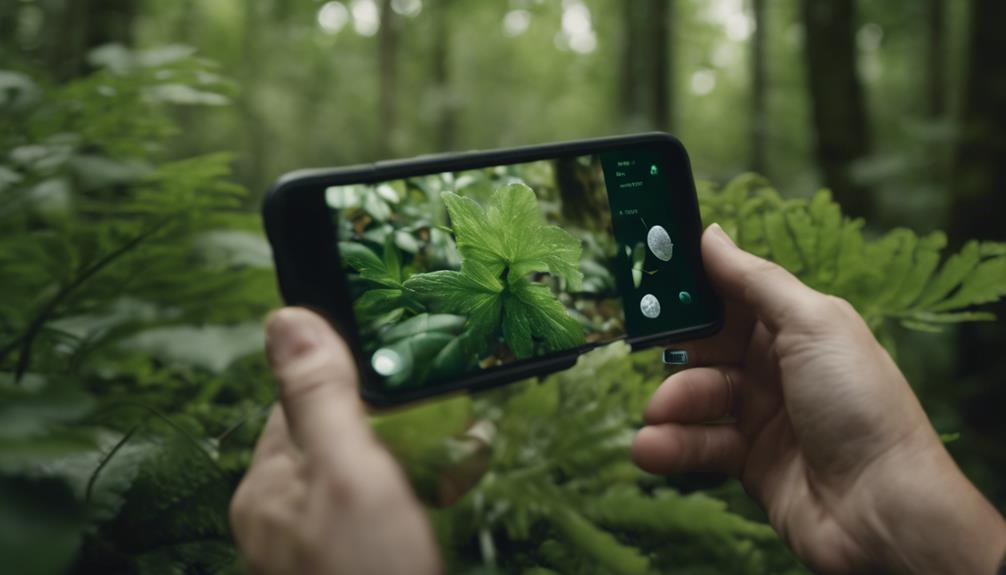
To improve your foraging skills and ensure accurate plant identification, consider utilizing multiple resources such as field guides, apps, and online databases. Foraging experts highly recommend this approach to anyone interested in foraging.
By consulting various sources, you can cross-reference plant characteristics, such as leaves, flowers, fruits, and growth habitats, increasing your confidence in identifying safe and edible species. This holistic view provided by multiple resources minimizes the risk of misidentifying toxic plants, ensuring a safer foraging experience.
One highly recommended book for plant identification is 'Botany in a Day' by Thomas J. Elpel. This book simplifies plant identification by focusing on plant families and key characteristics, making it a valuable resource for foragers.
Integrating field knowledge with digital tools like apps and online databases can greatly enhance the accuracy and efficiency of your plant identification process. By combining these resources, you can deepen your understanding of different plant species and make informed foraging decisions.
Starting With Small Samples

Consider beginning your foraging journey by cautiously sampling small amounts of new plants to evaluate their safety. This approach allows you to gradually introduce your body to unfamiliar botanicals while minimizing potential risks.
Here's why starting with small samples is vital in foraging:
- Allergic Reactions: Trying a small portion of a new plant helps gauge any allergic reactions or adverse effects on the body. This cautious experimentation can prevent severe allergic responses and guarantee your safety while foraging.
- Risk Avoidance: Foraging experts recommend starting with small samples to avoid potential risks associated with consuming unknown plants. This method allows you to identify safe options and steer clear of harmful ones.
- Exploration: Sampling small quantities of foraged plants not only helps in evaluating safety but also allows for a gradual introduction to new flavors and textures. By starting small, you can expand your palate and culinary experiences responsibly in the world of foraging.
Frequently Asked Questions
What Are the Best Books on Foraging?
Interested in mastering foraging? Explore in-depth guides that cover techniques, safety, ethics, and cooking. Gain insights on sustainable practices and conservation. These books provide valuable knowledge for your foraging journey.
What Are the Mistakes in Foraging?
To avoid mishaps in foraging, make sure you can correctly identify plants to prevent consuming poisonous ones. Learn about plant parts, preparation, and allergens for safety. Consider sustainability and carry emergency supplies. Ask experienced foragers for guidance.
What to Avoid When Foraging?
When foraging, avoid polluted areas, plants with poisonous traits, endangered species, private property without permission, and misidentifying toxic look-alikes. Stay safe by respecting nature, biodiversity, landowners, and being aware of potential dangers.
How to Learn About Foraging?
So, you wanna know how to learn about foraging, right? Well, immerse yourself in workshops, explore online resources, connect with pros, and get out there in nature. Start small, like with dandelions, and grow your skills!
Conclusion
Congratulations, you're now a foraging master! Remember, the key to success lies in identifying plants, staying safe, minimizing waste, and connecting with nature.
Share your skills with others and always follow safety guidelines. Use multiple resources for identification and start with small samples.
Happy foraging! Just watch out for those pesky poison ivy plants – they may not be as friendly as they look.



